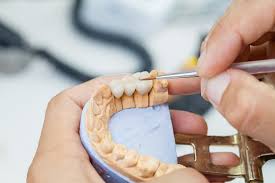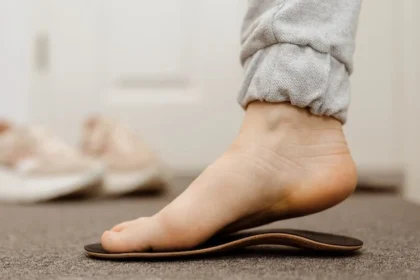An ingrown toenail occurs when the edge of a toenail grows into the surrounding skin, causing pain, swelling, and sometimes infection. This common condition can make simple activities, such as walking or putting on shoes, uncomfortable. Here are four remedies for treating an ingrown toenail at home or with professional care:
1. Soak the Foot
Warm water soaks help reduce pain and swelling from an ingrown toenail. Fill a basin with room-temperature water and add Epsom salt. The salt helps draw out inflammation and creates a healing environment for your toe.
Soak your affected foot for a few minutes several times a day. The water softens the nail and surrounding skin, which makes the nail less likely to dig deeper. After soaking, gently dry your foot with a clean towel. This remedy works best for mild ingrown nails that haven’t developed an infection.
2. Lift the Nail Carefully
After soaking your foot, you can try lifting the ingrown nail edge away from the skin. Use a small piece of clean cotton or unwaxed dental floss to gently separate the nail from the skin fold. Place the cotton or floss under the nail corner that’s growing into your skin. This creates a small barrier that helps the nail grow above the skin instead of into it. Change the cotton or floss daily after your foot soak to keep the area clean. Be very gentle with this technique; do not force the nail or dig too aggressively, as this can increase the risk of infection.
3. Apply Over-the-counter Treatments
Several over-the-counter products can help manage ingrown nail pain and prevent infection. Antibiotic ointments applied to the affected area help prevent bacteria from entering the skin break. Pain relievers reduce pain and inflammation.
Your shoe choice makes a big difference in healing and prevention. Wear shoes with plenty of room for your toes to move freely. Tight shoes put pressure on the ingrown nail, slowing healing. Open-toed shoes or sandals work best during treatment. Trim your nails properly to prevent future problems. Cut nails straight across instead of in a curved shape. Leave them slightly long rather than cutting too short, and avoid picking at the corners.
4. Seek Professional Treatment
Home remedies work for mild cases, but some ingrown nails need professional care. See a podiatrist if you have diabetes, nerve damage, or blood vessel disease because these conditions make infection dangerous and slow healing. Signs that you need medical help include severe pain, pus drainage, red streaks extending from the toe, or fever. Seek care if home treatments don’t improve your symptoms after a few days. A podiatrist can perform minor surgery to remove the ingrown portion of the nail. This provides instant pain relief and prevents the problem from coming back.
Get Help for an Ingrown Toenail
These four remedies help most people manage mild ingrown toenails at home. Foot soaks reduce inflammation, gentle nail lifting prevents further growth into the skin, and proper footwear supports healing. Don’t ignore signs of infection or severe symptoms, and seek prompt professional care if symptoms persist. Contact a trusted foot and ankle specialist near you to schedule your appointment and get help for an ingrown nail today.









